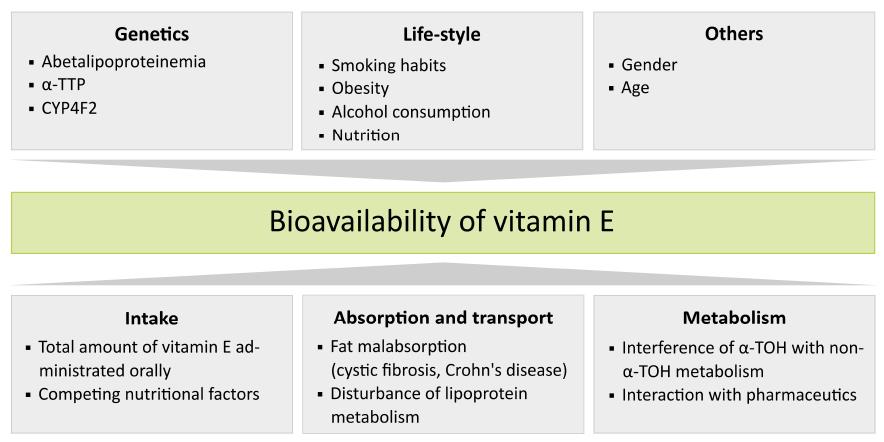Copyright
©The Author(s) 2016.
World J Biol Chem. Feb 26, 2016; 7(1): 14-43
Published online Feb 26, 2016. doi: 10.4331/wjbc.v7.i1.14
Published online Feb 26, 2016. doi: 10.4331/wjbc.v7.i1.14
Figure 1 Factors influencing the bioavailability of vitamin E.
Some factors affecting bioavailablity cannot be influenced, such as gender, age or genetic disposition, whereas others depend on individual habits and can be summarized as life-style factors. Variations in the physiological handling of vitamin E can also change its distribution status in the body. While uptake of vitamin E can be actively modulated, for example by the total amount of vitamin E intake and competing nutritional factors, absorption and transport principally depend on the state of health of the individual. In contrast, regulation of vitamin E metabolism is just partly influenced by exogenous factors, such as interfering pharmaceuticals.
- Citation: Schmölz L, Birringer M, Lorkowski S, Wallert M. Complexity of vitamin E metabolism. World J Biol Chem 2016; 7(1): 14-43
- URL: https://www.wjgnet.com/1949-8454/full/v7/i1/14.htm
- DOI: https://dx.doi.org/10.4331/wjbc.v7.i1.14









